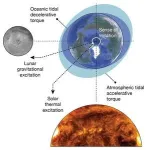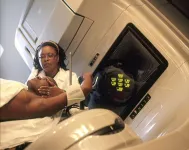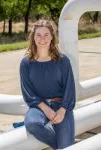(Press-News.org) HOUSTON – A new study by researchers at The University of Texas MD Anderson Cancer Center highlights novel insights into the evolution of multiple myeloma from precursor disease, which may help better identify patients likely to progress and develop new interventions.
Published today in Cancer Cell, the study integrates paired single-cell RNA sequencing and B cell receptor sequencing from 64 patients with multiple myeloma or precursor disease. The study achieved several notable milestones in the effort to better understand this evolutionary process and is believed to be the largest cohort of myeloma precursor patient samples analyzed at single-cell resolution.
How multiple myeloma, a deadly and incurable cancer of plasma cells in the bone marrow, evolves from precursor conditions like monoclonal gammopathy of undetermined significance (MGUS) and smoldering multiple myeloma remains largely a mystery. To answer that question, this study was designed by Elisabet Manasanch, M.D., associate professor of Lymphoma/Myeloma, in collaboration with Linghua Wang, M.D., Ph.D., associate professor of Genomic Medicine, and Minghao Dang, Ph.D., postdoctoral fellow in the Wang lab.
“This research is a big step towards understanding the evolutionary roadmap that leads to myeloma,” Wang said. “Additionally, there is a significant clinical unmet need to find and validate novel biomarkers to identify patients at high-risk of progression who would benefit the most from early treatment interventions.”
New methodology allows for deeper understanding of evolutionary paths
Among the important achievements of this study is the methodology used for sample acquisition. While fluorescence in situ hybridization (FISH) currently is the standard of care for identifying genetic abnormalities in multiple myeloma precursors, low tumor purity in the precursor stage has been a known limitation. By integrating FISH with single-cell sequencing data, the researchers were able to overcome this limitation and thoroughly analyze the transcriptomic landscape of even the earliest precursors. This also led to better refinement of genetic subtypes.
According to the researchers, integrating single-cell RNA sequencing and B cell receptor sequencing offers advantages for detecting clonal or aberrant plasma cells during the early stages of tumorigenesis.
For example, these plasma cells might already have undergone clonal expansion but remain less transformed, exhibiting genomic and transcriptomic characteristics similar to normal cells. This can result in misclassification when solely relying on the scRNA-seq approach.
Data reveal potential therapeutic targets, markers of risk for myeloma progression
One important finding was the substantial genomic and transcriptional heterogeneity present in the earliest precursor stages, including MGUS, even within a single patient. While previous studies have reported such heterogeneity, this study further uncovers that intratumoral heterogeneity extends to established myeloma-related genes, such as CCND1, CD38, BCMA, LAMP5, MYC, some of which have been targeted in clinical trials.
Additionally, the researchers conducted an in-depth characterization of changes at various levels (transcriptome, genome, and clonality) in relation to cell differentiation status and identified distinct correlation patterns within genetic subtypes. The dynamic changes in gene expression associated with myeloma throughout the differentiation process pointed to genes potentially related to disease progression.
“This study unravels the complexity of precursor plasma cells and their interactions within their environmental milieu at a much higher resolution than previously established thanks to the technological constraints that single-cell sequencing has now overcome,” Manasanch said.
The study also revealed that precursor states predominantly followed a linear evolution pattern, while advanced multiple myeloma displayed a branching pattern, which may help researchers better understand the biological changes associated with disease progression.
Lastly, the researchers identified 15 major subtypes of immune cells and stromal cells within the tumor microenvironment. They observed noteworthy variations in the microenvironment composition as well as differences in the interaction between the tumor and microenvironment across samples of different genetic subtypes.
The ongoing study includes more than 250 patients, of which 64 were sequenced for this publication. The researchers continue to profile available samples and plan to further explore the potential for their discoveries to be translated into clinical impact.
This study was supported by the National Institutes of Health (1S10OD024977-01), MD Anderson’s High-Risk Multiple Myeloma Moon Shot®, the Riney Family Multiple Myeloma Research Fund at MD Anderson, and the Dr. Miriam and Sheldon G. Adelson Medical Research Foundation.
View this on the MD Anderson Newsroom
END
Study brings new understanding of multiple myeloma evolution
Novel observations of earliest precursor stages among notable findings that could help clinicians intervene earlier in patients most likely to progress
2023-06-12
ELSE PRESS RELEASES FROM THIS DATE:
Previously unknown material could revolutionize cancer treatment
2023-06-12
A new material, created at the little-explored intersection of organic and inorganic chemistry, could not only enable more powerful solar panels, but it could also usher in the next generation of cancer treatments.
Described in a Nature Chemistry journal paper published today, the composite is made of ultra-tiny silicon nanoparticles, and an organic element closely related to those used in OLED televisions. It is capable of increasing the speed with which two molecules can exchange energy, and of converting lower-energy light into higher-energy light.
Only a handful of laboratories ...
19-hour days for a billion years of Earth’s history: Study
2023-06-12
It's tough accomplishing everything we want to get done in a day. But it would have been even more difficult had we lived earlier in Earth's history.
Although we take the 24-hour day for granted, in Earth's deep past, days were even shorter.
Day length was shorter because the Moon was closer. "Over time, the Moon has stolen Earth's rotational energy to boost it into a higher orbit farther from Earth," said Ross Mitchell, geophysicist at the Institute of Geology and Geophysics of the Chinese Academy of Sciences and lead author of a new study published in Nature Geoscience.
"Most models of Earth's rotation predict that day length was consistently shorter ...
New method enables study of nano-sized particles
2023-06-12
Researchers at Karolinska Institutet have created a new method of studying the smallest bioparticles in the body. The study, which is published in Nature Biotechnology, has considerable scientific potential, such as in the development of more effective vaccines.
Circulating around the body are nanoparticles that affect it in one way or another. For example, there are lipoproteins that maintain cell metabolism, pathogenic viruses that cause many diseases and lipid nanoparticles that are used to carry drugs, like recent lipid nanoparticle-based mRNA vaccines.
However, ...
Unveiling quantum gravity: New results from IceCube and Fermi data
2023-06-12
In a study published in Nature Astronomy today, a team of researchers from the University of Naples “Federico II”, the University of Wroclaw, and the University of Bergen examined a quantum-gravity model of particle propagation in which the speed of ultrarelativistic particles decreases with rising energy. This effect is expected to be extremely small, proportional to the ratio between particle energy and the Planck scale, but when observing very distant astrophysical sources, it can accumulate to observable levels. The ...
State agencies grant nationwide access to ultrasound disinfectant from Parker Labs
2023-06-12
FAIRFIELD, NJ—Parker Laboratories Inc. has announced that the environmental protection and pesticide control agencies of all 50 states have authorized registration of Tristel DUO, an intermediate-level disinfecting foam for the cleaning and disinfection of general medical surfaces—including noninvasive ultrasound transducers and their related equipment.
Tristel DUO is manufactured and distributed for US markets by Parker Laboratories under an exclusive commercial partnership with UK-based infection prevention company Tristel plc. Parker Laboratories ...
Researchers: win up to $40K studying effects of lipoprotein(a) on cardiovascular disease, stroke risk
2023-06-12
DALLAS, June 12, 2023 — The American Heart Association, the world’s leading voluntary organization focused on heart and brain health, invites scientific researchers across the globe to compete in a new data challenge to better inform the scientific understanding of how lipoprotein(a) [Lp(a)] levels impact the risk of cardiovascular disease and stroke. The winning project is eligible to receive a $40,000 USD cash prize.
High levels of Lp(a) — a low-density lipoprotein variant containing a protein called apolipoprotein(a) ...
Revolutionizing cardiology: AI-based technology offers accurate analysis of cardiac disease
2023-06-12
(Toronto, June 12, 2023) – New research published in JMIR Cardio reveals the remarkable potential of artificial intelligence (AI) technology in analyzing coronary angiography, a common diagnostic procedure for coronary artery disease. Led by Dr In Tae Moon, the study conducted at Uijeongbu Eulji University Hospital in Korea showcases the power of AI-based quantitative coronary angiography (AI-QCA) in enhancing clinical decision-making.
The study compared AI-QCA to intravascular ultrasound (IVUS), to validate its performance. IVUS is ...
Call for papers: JMIR Bioinformatics and Biotechnology
2023-06-12
JMIR Bioinformatics and Biotechnology (JBB) is a leading, international, peer-reviewed journal that aims to publish high-quality original research articles, reviews, and perspectives on all aspects of bioinformatics, computational biology, and biotechnology.
We invite researchers, educators, and practitioners to submit their original research articles, reviews, and perspectives to JBB. Our scope includes but is not limited to:
Bioinformatics, including genomic variation detection algorithms, tools, and databases
Artificial ...
SwRI’s Dr. Natalie Smith receives ASME Dedicated Service Award
2023-06-12
“It is an honor,” Smith said. “The ASME Turbo Expo community has been a valuable part of my professional development and it has been a pleasure to give back." Since joining SwRI in 2016, Smith has performed aerodynamic design and testing of turbomachinery and advanced system analysis for programs related to power generation, aviation, oil and gas, and energy storage, including next-generation supercritical carbon dioxide power cycles.
Smith has also managed three long-duration energy storage projects, developing a pumped thermal energy storage (PTES) demonstration facility, conducting a techno-economic feasibility study of ...
Press registration open for hybrid ACS Fall 2023 meeting
2023-06-12
Journalists who register for the fall meeting of the American Chemical Society (ACS) will have access to about 12,000 presentations on topics including agriculture and food, energy and fuels, health and medicine, sustainability and more. ACS Fall 2023 is a hybrid meeting being held virtually and in-person in San Francisco on Aug. 13-17 with the theme “Harnessing the Power of Data.”
ACS considers requests for press credentials and complimentary registration to meetings from reporters (staff and freelance) and public information officers at government, nonprofit and ...
LAST 30 PRESS RELEASES:
Interaction of climate change and human activity and its impact on plant diversity in Qinghai-Tibet plateau
From addressing uncertainty to national strategy: an interpretation of Professor Lim Siong Guan’s views
Clinical trials on AI language model use in digestive healthcare
Scientists improve robotic visual–inertial trajectory localization accuracy using cross-modal interaction and selection techniques
Correlation between cancer cachexia and immune-related adverse events in HCC
Human adipose tissue: a new source for functional organoids
Metro lines double as freight highways during off-peak hours, Beijing study shows
Biomedical functions and applications of nanomaterials in tumor diagnosis and treatment: perspectives from ophthalmic oncology
3D imaging unveils how passivation improves perovskite solar cell performance
Enriching framework Al sites in 8-membered rings of Cu-SSZ-39 zeolite to enhance low-temperature ammonia selective catalytic reduction performance
AI-powered RNA drug development: a new frontier in therapeutics
Decoupling the HOR enhancement on PtRu: Dynamically matching interfacial water to reaction coordinates
Sulfur isn’t poisonous when it synergistically acts with phosphine in olefins hydroformylation
URI researchers uncover molecular mechanisms behind speciation in corals
Chitin based carbon aerogel offers a cleaner way to store thermal energy
Tracing hidden sources of nitrate pollution in rapidly changing rural urban landscapes
Viruses on plastic pollution may quietly accelerate the spread of antibiotic resistance
Three UH Rainbow Babies & Children’s faculty elected to prestigious American Pediatric Society
Tunnel resilience models unveiled to aid post-earthquake recovery
Satellite communication systems: the future of 5G/6G connectivity
Space computing power networks: a new frontier for satellite technologies
Experiments advance potential of protein that makes hydrogen sulfide as a therapeutic target for Alzheimer’s disease
Examining private equity’s role in fertility care
Current Molecular Pharmacology achieves a landmark: real-time CiteScore advances to 7.2
Skeletal muscle epigenetic clocks developed using postmortem tissue from an Asian population
Estimating unemployment rates with social media data
Climate policies can backfire by eroding “green” values, study finds
Too much screen time too soon? A*STAR study links infant screen exposure to brain changes and teen anxiety
Global psychiatry mourns Professor Dan Stein, visionary who transformed mental health science across Africa and beyond
KIST develops eco-friendly palladium recovery technology to safeguard resource security
[Press-News.org] Study brings new understanding of multiple myeloma evolutionNovel observations of earliest precursor stages among notable findings that could help clinicians intervene earlier in patients most likely to progress








